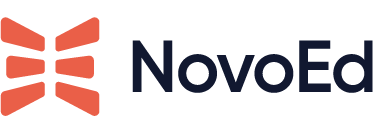ATD Blog
Putting Taxonomies to Work: Skills Tagging for Deep Capability Building and Experiential Learning
Wed Jun 08 2022

Learning can be an abstract process that occurs sporadically and eludes measurement despite our best efforts. At the same time, every company needs to upskill and reskill its employees to keep up with a changing economy. This is a complicated challenge that involves understanding where employees are skill-wise, knowing where they need to be, and bridging the gap with learning.
As a quantifiable inventory of skills, taxonomies answer these needs by providing a structured and dynamic list of abilities that can make workforce planning more intentional, match employers with job candidates, and even reduce systematic bias by making skill requirements (and the relationships between them) more explicit. Skill taxonomies are all the rage now, but they’re only part of the picture.
How We Can Put Taxonomies to Work
A taxonomy needs to connect to the messy business of learning itself to be meaningful. In the domain of hard skills, L&D has progressed with connecting granular learning objectives to learning content and assessment items. This becomes more challenging with soft skills and deep capability building. It’s one thing to tag a hard skill like “understanding a balance sheet” or “recall the SEO best practice” and another to tag a soft or human skill like “build rapport with a customer” or “deliver effective performance feedback” to the activities like debate, discussion, and role play, which are more open-ended in nature, that may not have right or wrong answers, that often occur in-person, or that may require complex evaluation with subject matter experts.
It is difficult to design and deliver these experiences at scale, let alone report on them, so often only a small segment of our workforce (high potentials and executives) has access to the premium learning experiences that build deep capabilities (what we’re calling professionally bundled skill sets). Deep capabilities require a blend of cognitive, empathic, and practical skills that cut across multiple domains and connect the hard and soft, whether you want to call them “durable,” “human,” or “power” skills.
Skills Tagging for Deep Capability Building
Learning platforms can address this problem head-on with “skills tagging” type features that help us explicitly connect learning—the debate, discussion, application, feedback, synthesizing, and contextualizing—to the underlying skills that this learning develops. This helps us as learning leaders create experiences that are premium, high-quality, and rich in human connection as well as scalable, measurable, and enterprise-grade.
This development lays the foundation for measurement and feedback rich activity. Because of the tagging, learners will receive quantitative and qualitative feedback on how well they demonstrated skills within their practice videos. For example, if they are practicing “inclusive leadership” in a video practice role-play feature, we can see whether they solicit diverse perspectives and mitigate unconscious bias. Rich, real-time feedback energizes the learner, neutralizes the negative impact of any criticism through specificity, and keeps the learner in the flow of practice for continuous development. Any learner and leader knows it’s deep, repeated practice, spaced intentionally, that truly drives results.
For the program administrator, this granular data at the skills level means more capacity to zoom in and out, review patterns across a cohort, stage interventions, and improve content and instructional design in real-time based on engagement and performance data.

